TruthScan vs. Decopy AI: Which Detects AI Images More Accurately?
I’m putting TruthScan and Decopy AI in an image detection showdown. The gap was wider than I expected.
John Angelo Yap
Updated October 17, 2025
Detectives chasing after a robot painter, generated with Midjourney
Reading Time: 4 minutes
AI-generated images are getting harder to spot — and that’s both impressive and terrifying. What once looked like obvious deepfake material has become so refined that even trained eyes can’t always tell the difference.
Which is why tools like TruthScan and Decopy AI make sense. Both claim to detect AI-generated images with high precision, helping users verify whether a picture is real or machine-made. But as we’ve seen with text detection, promises of high accuracy don’t always hold up in real-world testing.
So today, we’re putting these two tools head-to-head. TruthScan brings enterprise-level detection and speed, while Decopy AI offers a simpler, more accessible approach. The goal? To see which one actually performs better when faced with the increasingly complex world of AI-generated visuals.
What Is TruthScan?
TruthScan has quickly become one of the most advanced AI detection suites out there. It’s not just an image detector — it’s a comprehensive AI detection ecosystem with tools designed to identify AI across text, images, audio, and even video.

Its AI Image Detector sits at the core of that system. Designed for real-time analysis, it can flag manipulated or synthetic visuals with sub-second detection speeds (under 100ms). That makes it viable not just for individuals, but for companies that need to verify hundreds or thousands of images per day — think journalists, content platforms, or cybersecurity teams.
A few things make TruthScan’s approach stand out:
- Multi-layered analysis: It doesn’t just look at pixels — it analyzes noise patterns, compression artifacts, and inconsistencies in lighting or texture that commonly appear in AI-generated content.
- Cross-model compatibility: It’s been trained to detect outputs from leading image generators like Midjourney, DALL·E, and Stable Diffusion, along with newer multimodal tools like OpenAI’s GPT-4o.
- Enterprise performance: It’s fully API-ready, with SOC 2 Type II compliance and 24/7 enterprise support — the kind of reliability most free tools don’t offer.
What is Decopy AI?
Decopy AI started as a text-focused tool — detecting AI-generated essays, blogs, and articles — but it’s been steadily expanding into image detection as the need for visual verification grows.
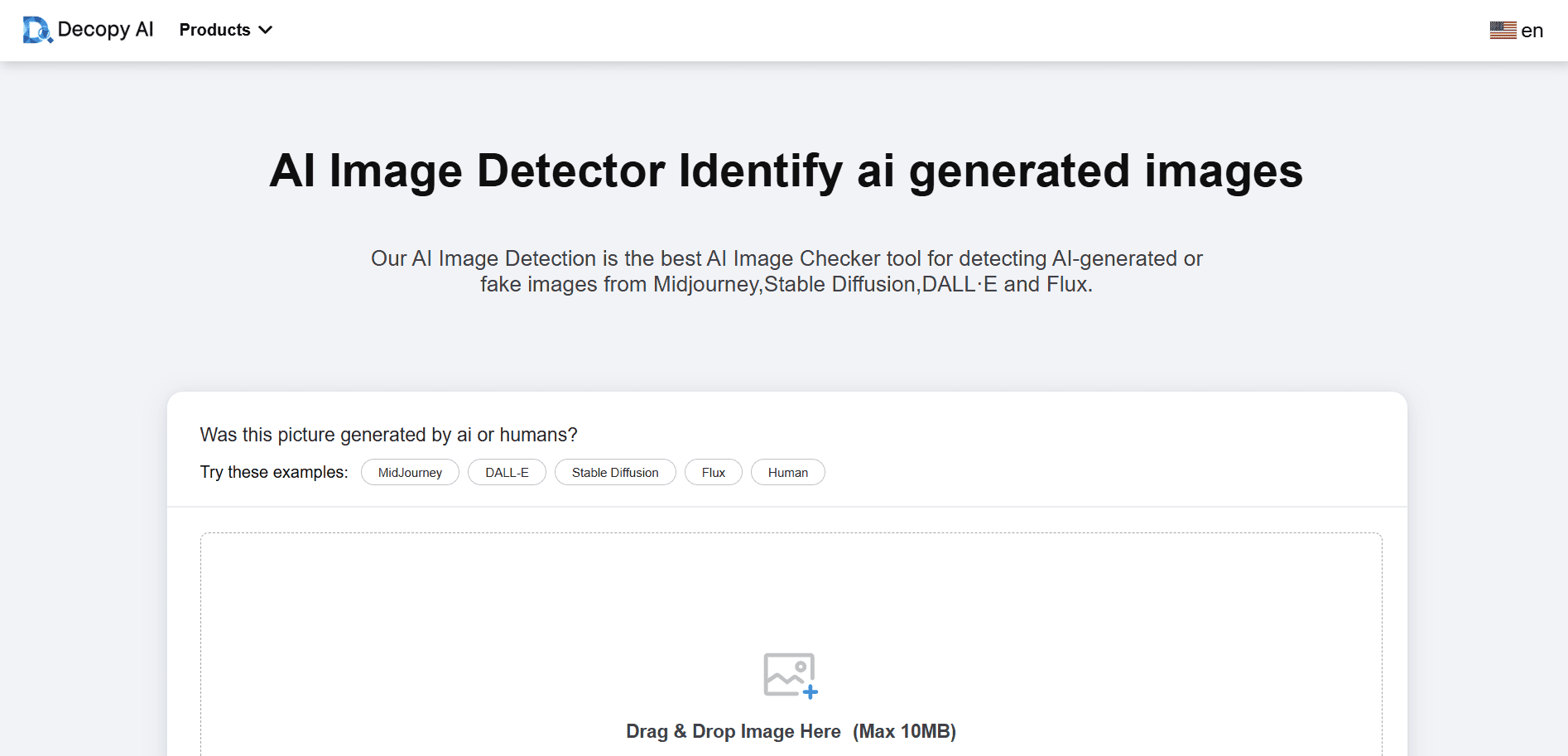
Its AI Image Detector operates using deep visual analysis, comparing image characteristics against a massive dataset of both human and AI-created visuals. The goal is to spot subtle deviations in texture, edge sharpness, and light behavior that signal synthetic generation.
TruthScan vs. Decopy AI: Image Detection
Test #1
TruthScan: Correctly identified Midjourney image as machine-generated.
AI Image Likelihood: 97%
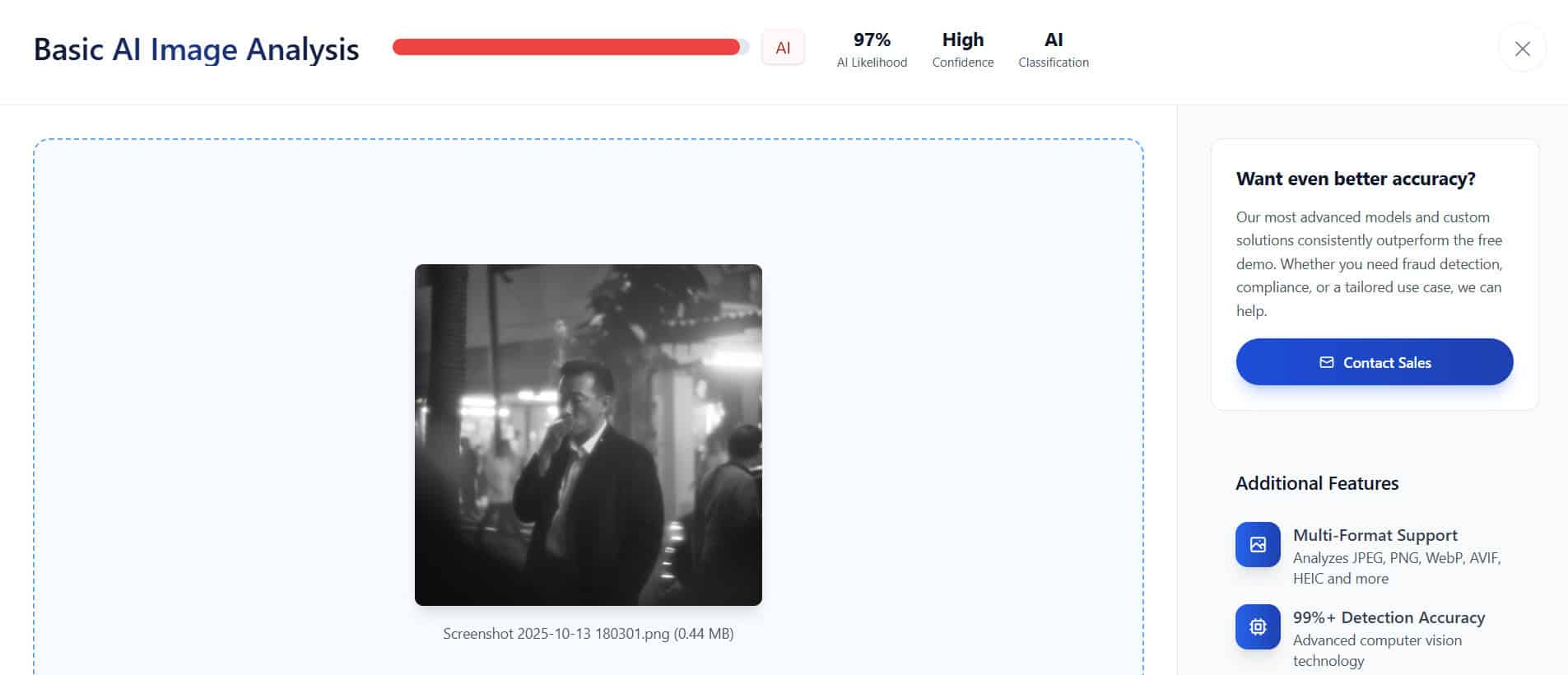
Decopy AI: Incorrectly identified Midjourney image as human-created.
AI Image Likelihood: 0%
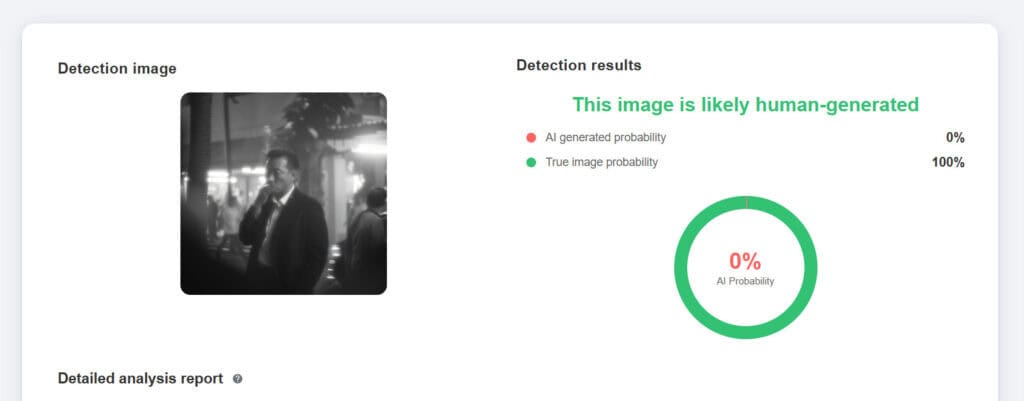
Test #2
TruthScan: Correctly identified Midjourney image as machine-generated.
AI Image Likelihood: 98%
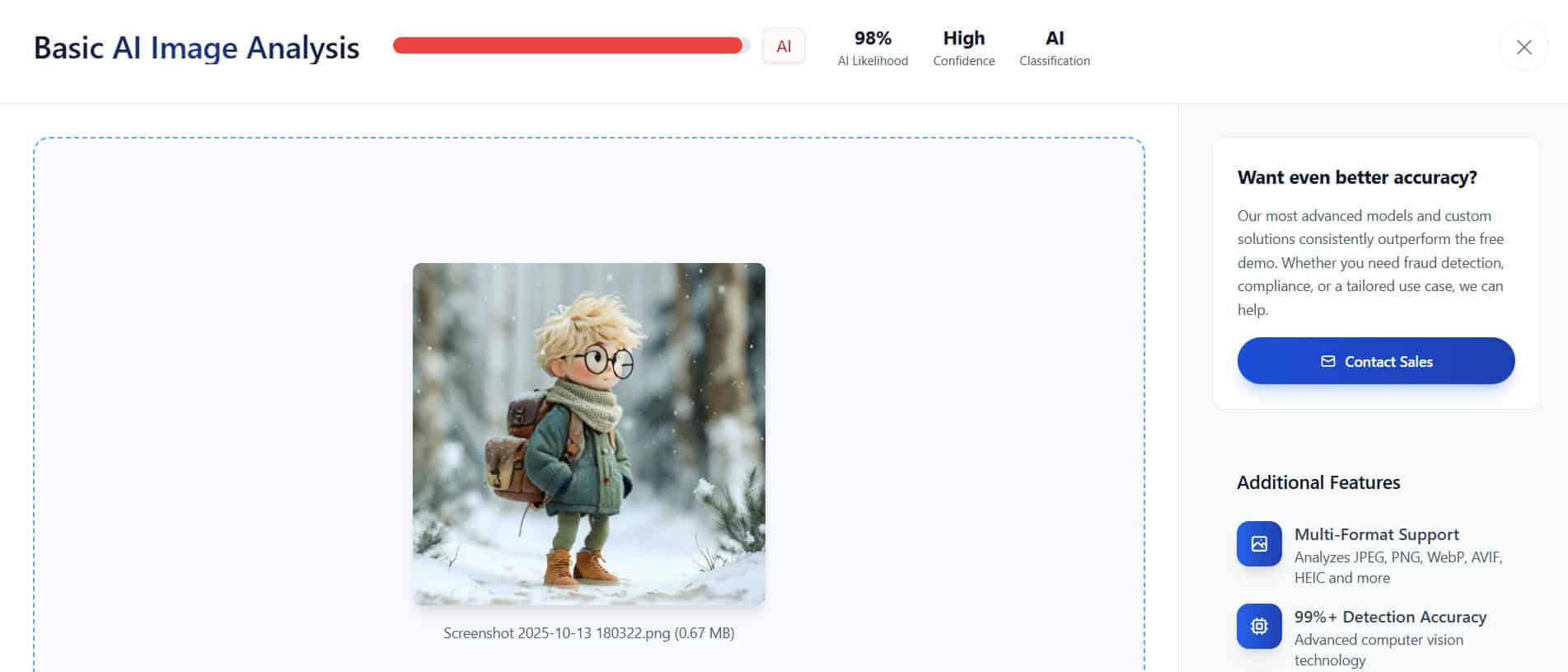
Decopy AI: Incorrectly identified Midjourney image as human-created.
AI Image Likelihood: 31%
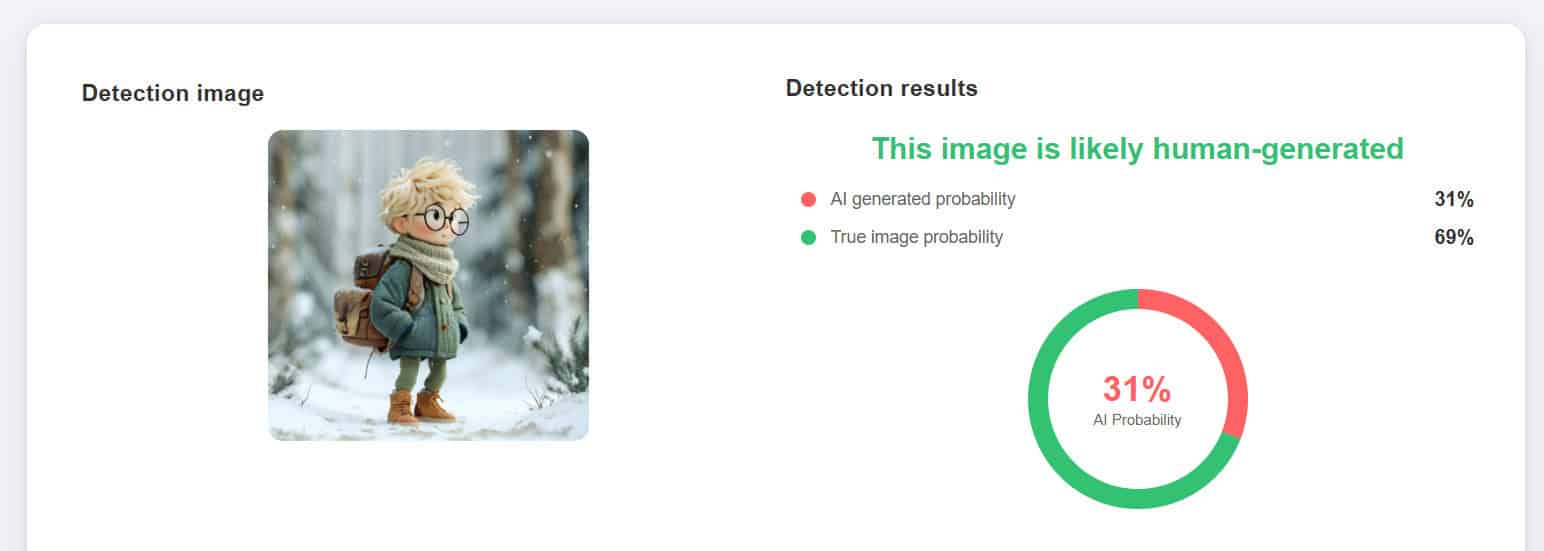
Test #3
TruthScan: Correctly identified Midjourney image as machine-generated.
AI Image Likelihood: 97%
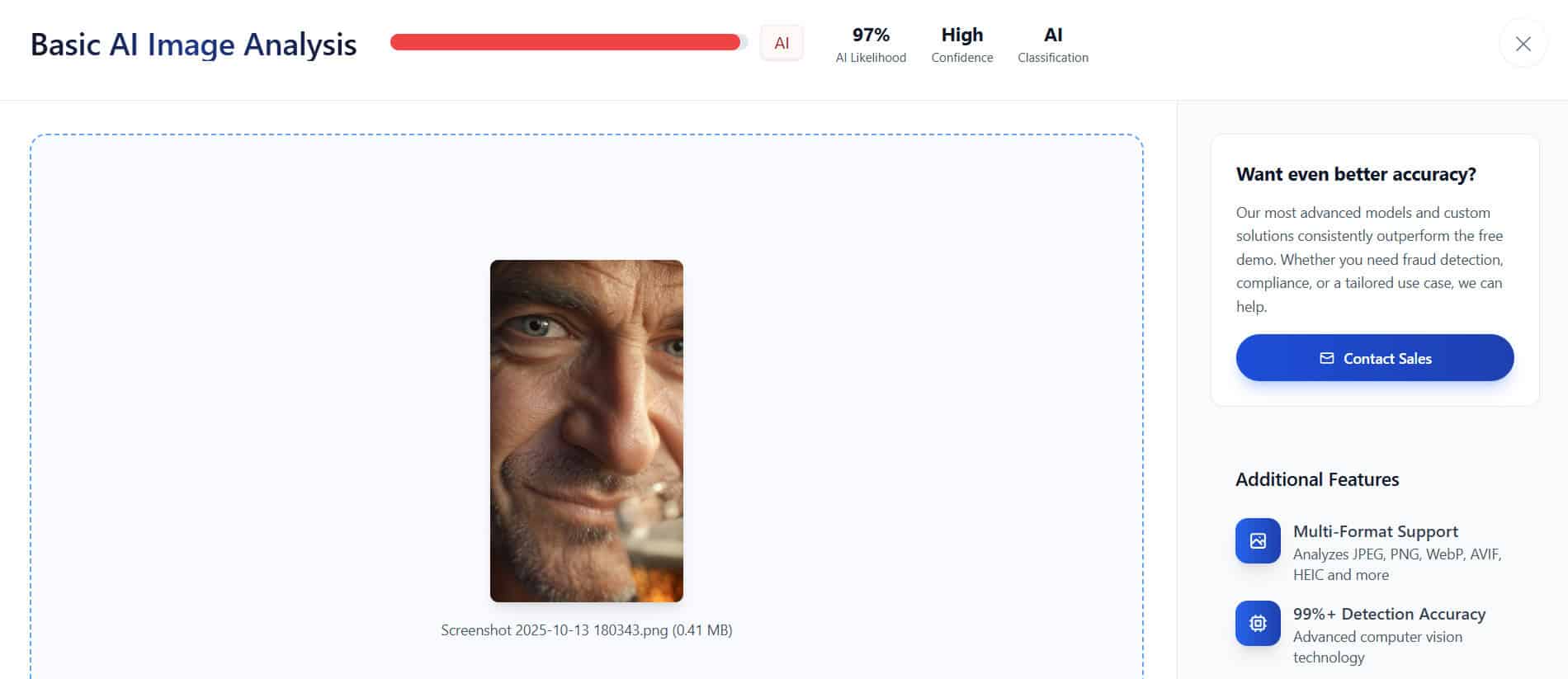
Decopy AI: Correctly identified Midjourney image as machine-generated.
AI Image Likelihood: 91%
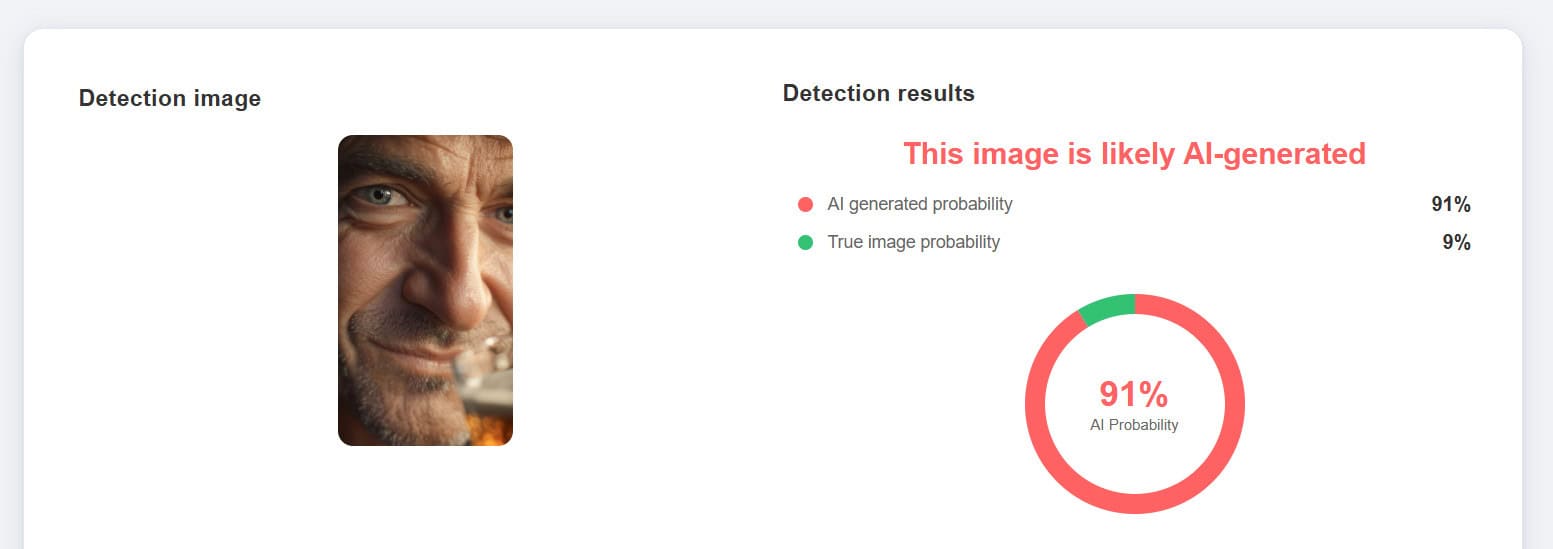
Test #4
TruthScan: Correctly identified Midjourney image as machine-generated.
AI Image Likelihood: 98%
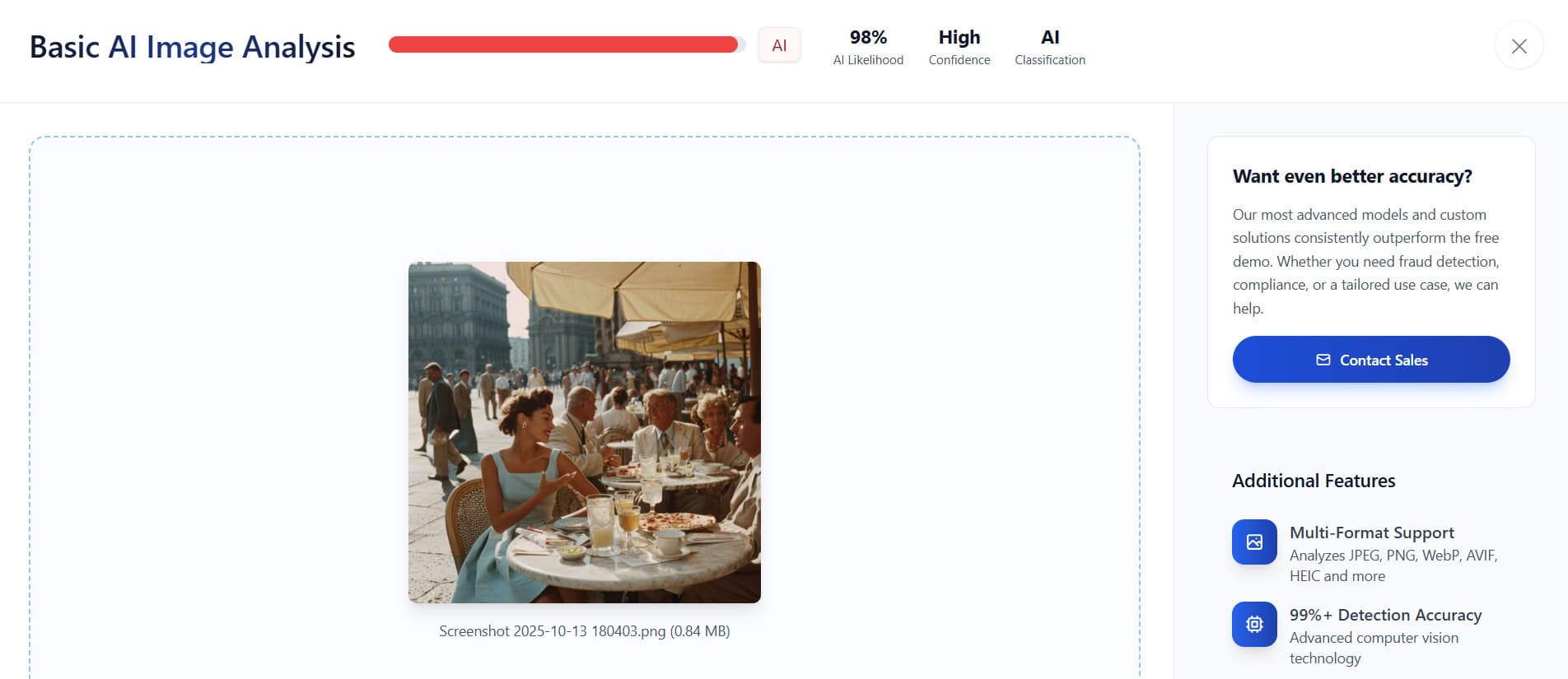
Decopy AI: Correctly identified Midjourney image as machine-generated.
AI Image Likelihood: 99%
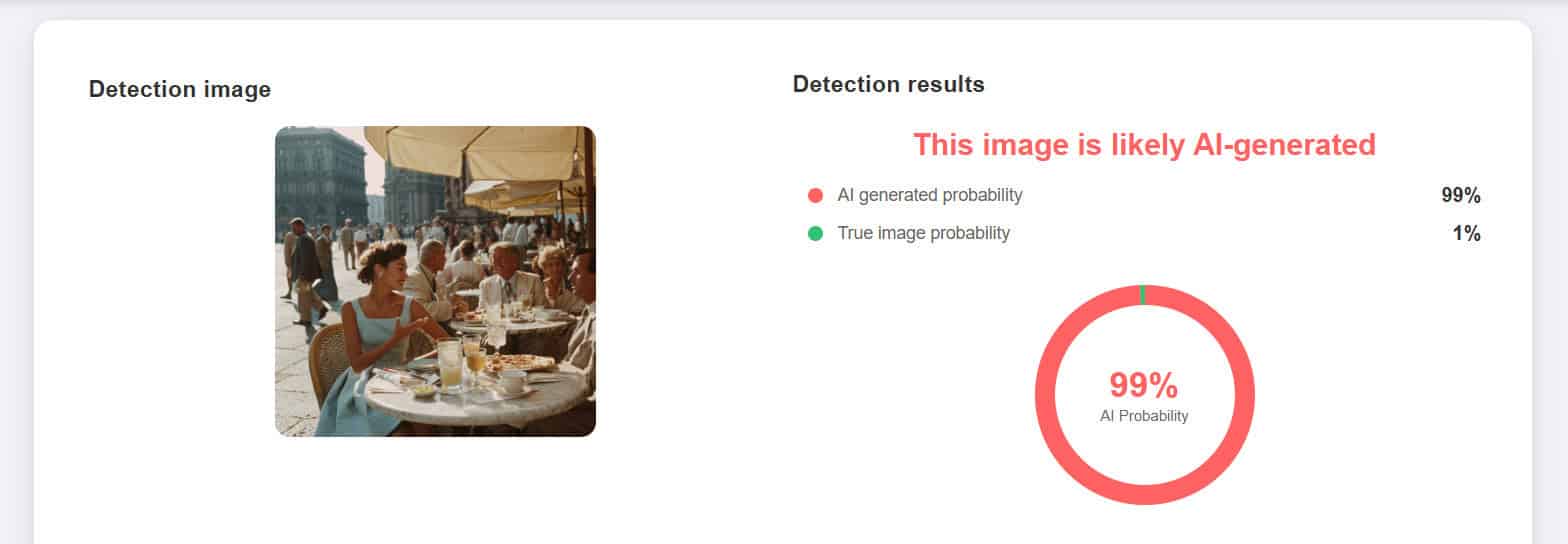
Test #5
TruthScan: Correctly identified Midjourney image as machine-generated.
AI Image Likelihood: 97%
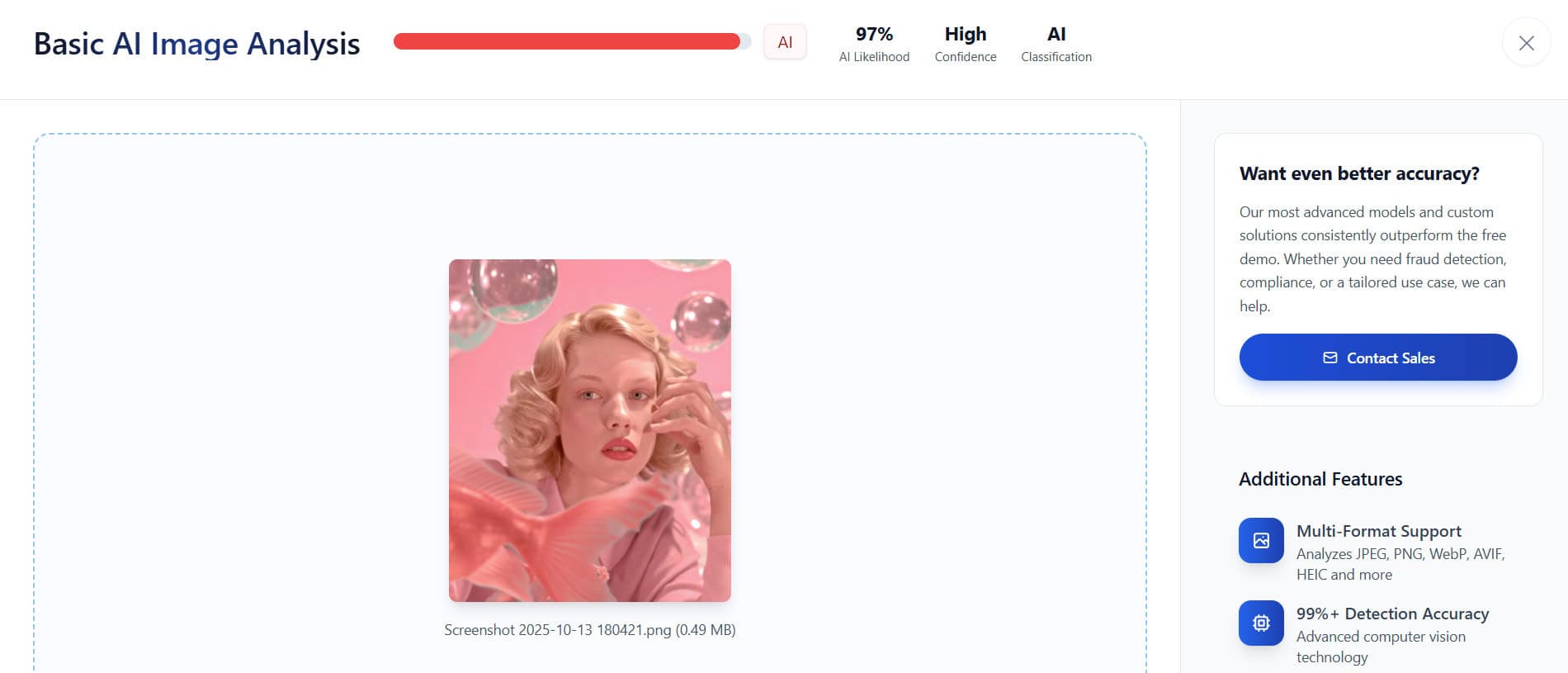
Decopy AI: Correctly identified Midjourney image as machine-generated.
AI Image Likelihood: 83%
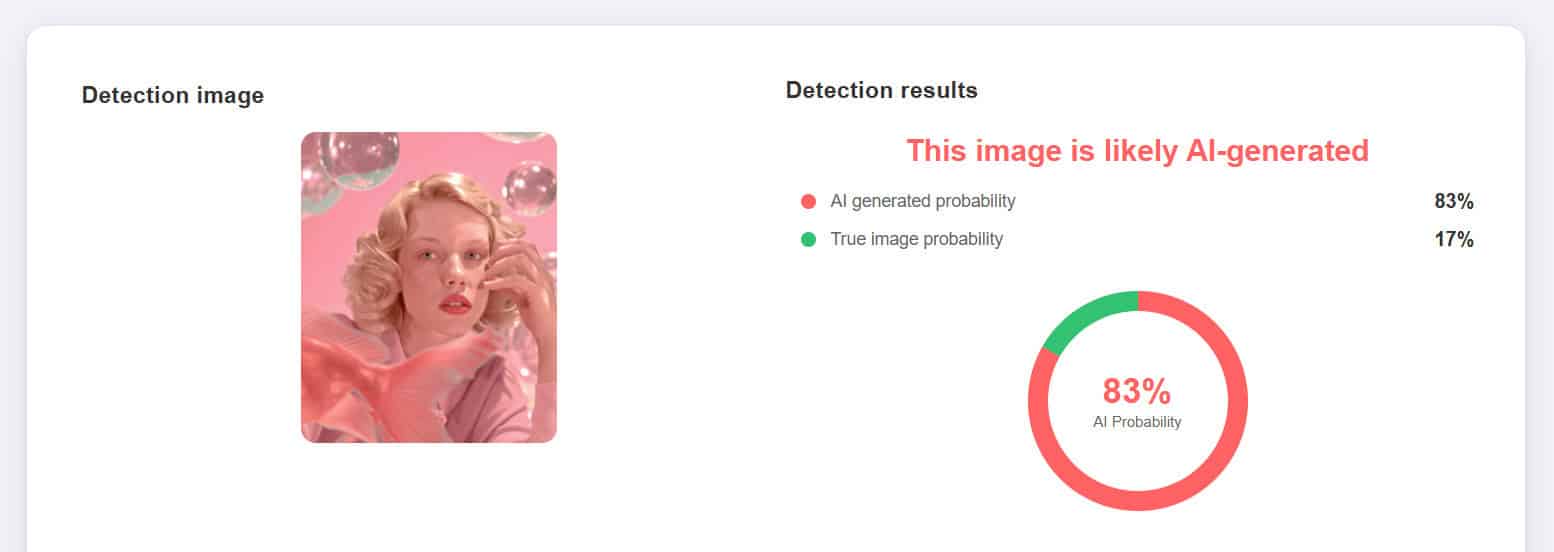
Test #6
TruthScan: Correctly identified Midjourney image as machine-generated.
AI Image Likelihood: 97%
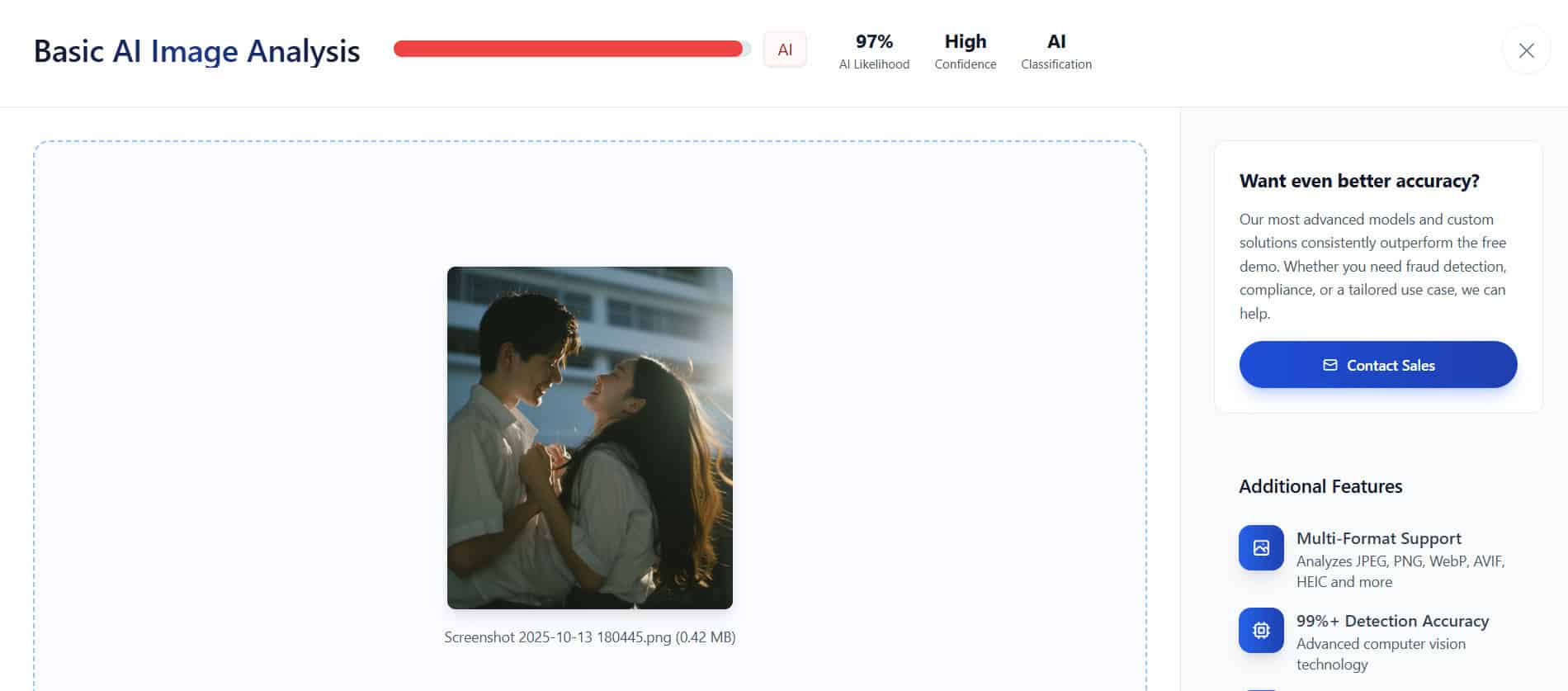
Decopy AI: Correctly identified Midjourney image as machine-generated.
AI Image Likelihood: 100%
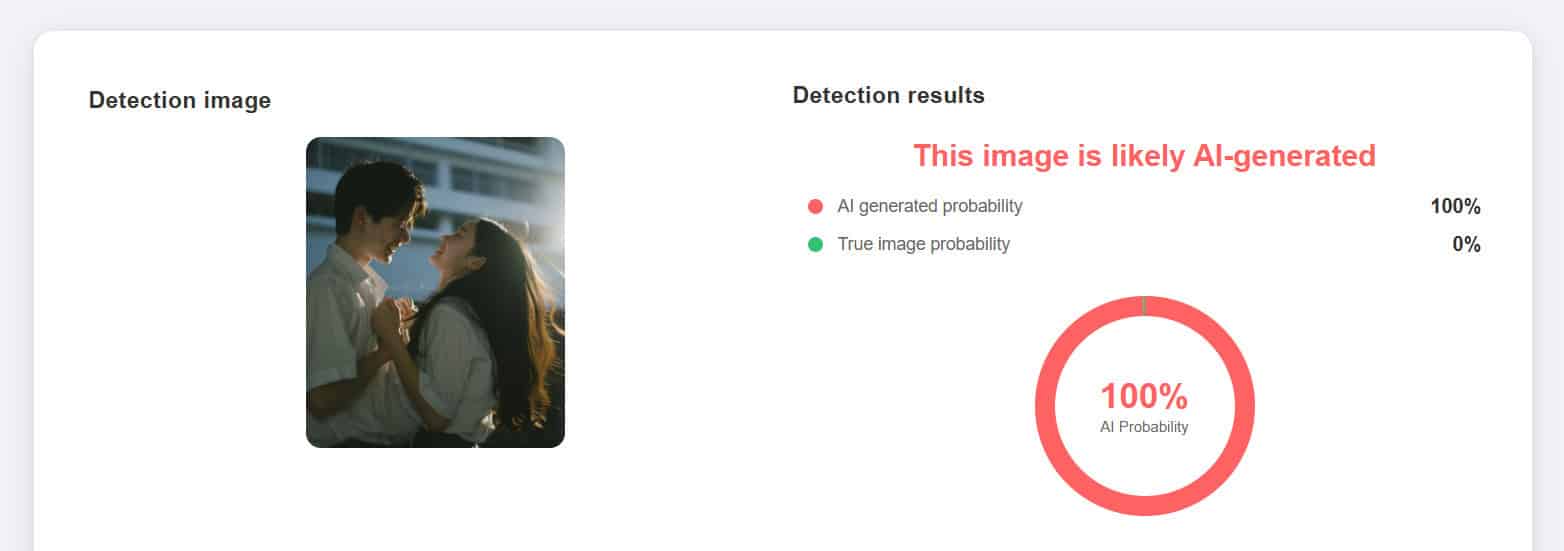
Test #7
TruthScan: Detector unsure.
AI Image Likelihood: 42%
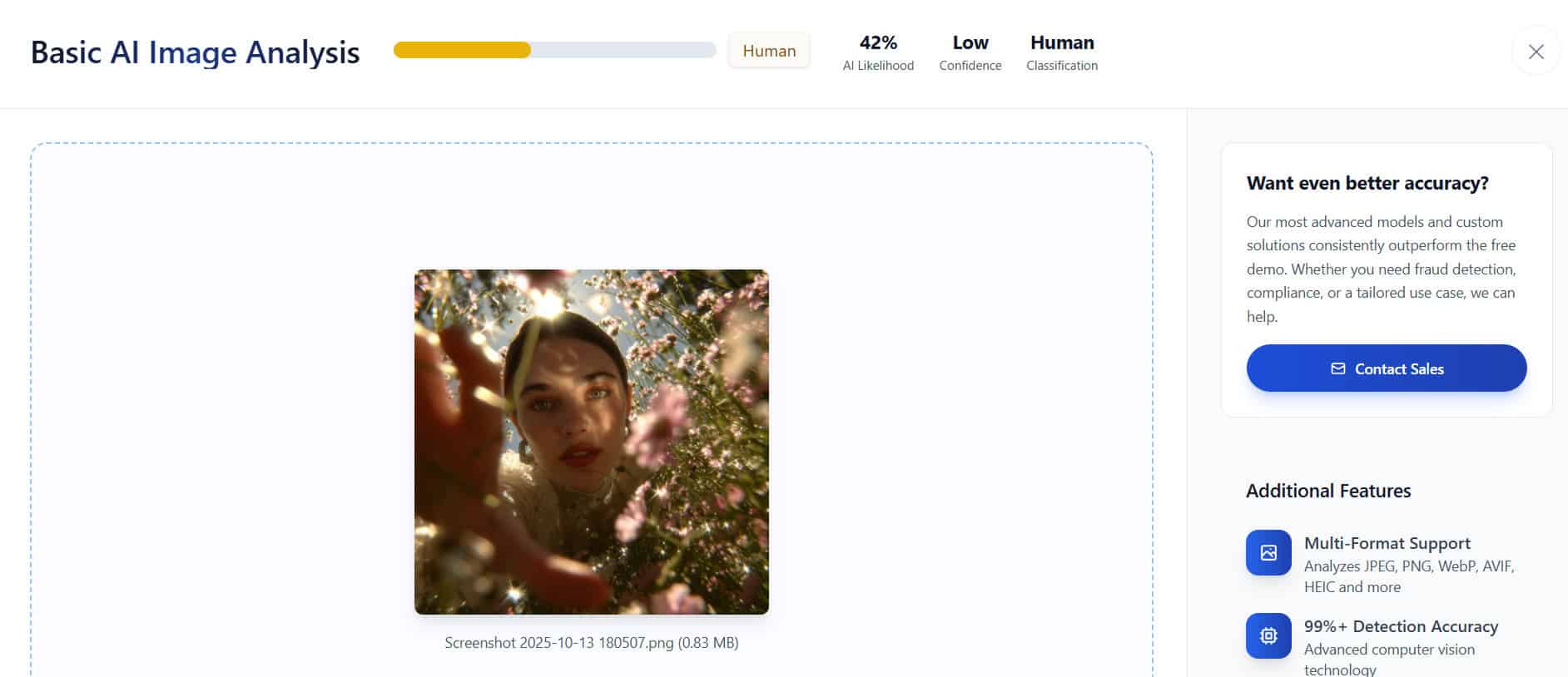
Decopy AI: Incorrectly identified Midjourney image as human-created.
AI Image Likelihood: 0%
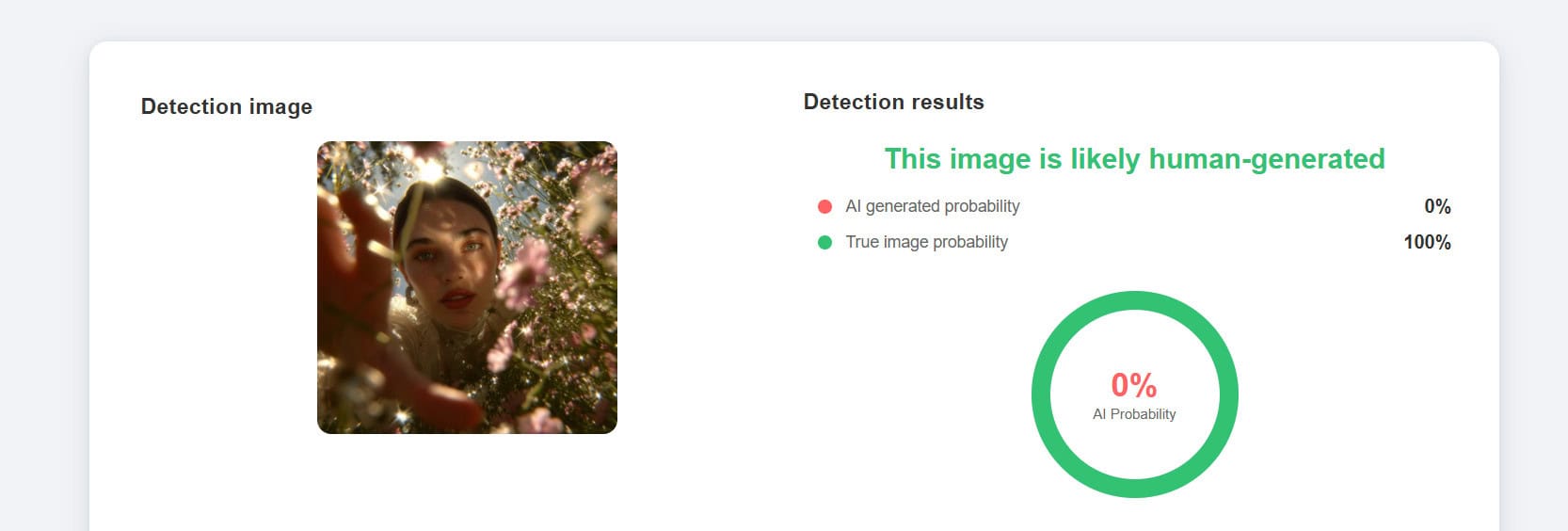
Average Score
Test Number | TruthScan | Decopy AI |
#1 | 97% | 0% |
#2 | 98% | 31% |
#3 | 97% | 91% |
#4 | 98% | 99% |
#5 | 97% | 83% |
#6 | 97% | 100% |
#7 | 42% | 0% |
Score | 89.43% | 57.71% |
The Bottom Line
After running both tools through the same set of AI-generated images, the results tell a clear story — and it’s one that favors precision over simplicity.
TruthScan came out ahead with an 89.43% correctness rate, demonstrating strong consistency across different types of AI images. It didn’t just pick up on obvious tells like texture mismatches — it also caught finer details, like slight depth distortions and unnatural lighting shifts.
Decopy AI, on the other hand, landed at 57.71% correctness, which isn’t terrible — but it struggled with more modern, high-fidelity AI imagery.
In short: Decopy AI is good for casual checks. TruthScan is good for the truth.
Want to Learn Even More?
If you enjoyed this article, subscribe to our free newsletter where we share tips & tricks on how to use tech & AI to grow and optimize your business, career, and life.